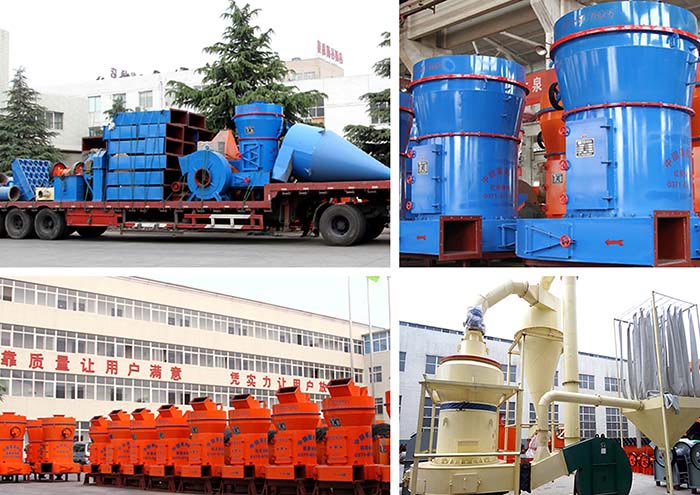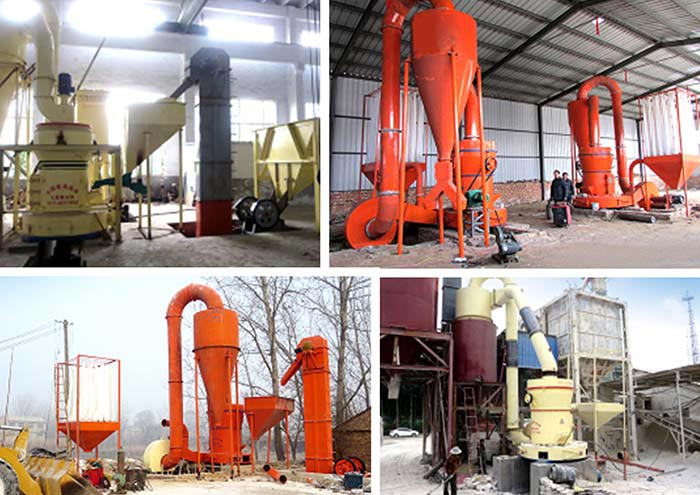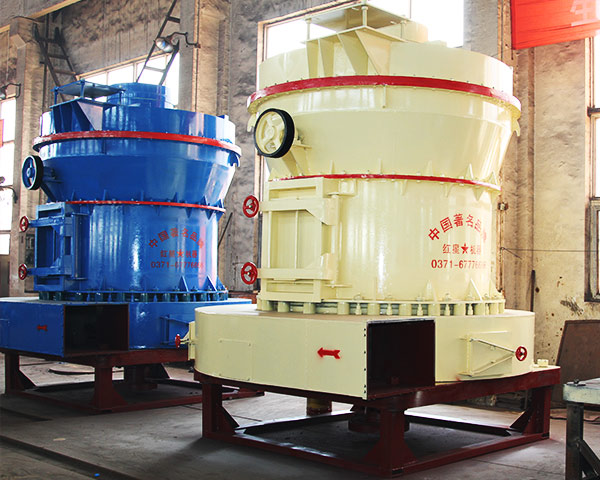The Handling Materials and Application of Raymond Mill:
Hongxing Raymond mill is widely used for grinding non-flammable and non-explosive materials whose Moh’s hardness is below 9.3 and humidity less than 6% such as barite, calcite, potassium feldspar, talc, marble, limestone, dolomite, fluorite and lime, activated clay, activated carbon, bentonite, kaolin, cement, phosphate rock, gypsum, glass and thermal insulation material in mine, metallurgy, chemistry and building industry.

The Main Structure of Raymond Mill:
This machine is mainly composed of main engine, analytical engine, air blower, clone separator for final products, clone separator for micro powders and air pipe, and the main engine is composed of rack, inlet air volute, relieving tool, grinding roll, grinding ring and cover piece.

Compared with ball mill, this equipment has high grinding efficiency, low electricity consumption and small coverage size and one-time investment. The grinding roll tightly presses on the grinding ring under centrifugal force; for this reason, when the grinding roll and the grinding ring are abraded, the output and the fineness of the final products are not influenced. The changing cycle of the grinding roll and the grinding ring is long. The air separation flow of this machine cyclically flows inside the air blower, mill case, cyclone separator and air blower, so that compared with high-speed centrifugal crusher, this machine has little powder dust and the operational workshop is clean.

When Raymond mill works, the materials that need to be crushed are fed into the machine through the feeding hopper. The grinding roll that hangs on the main engine will rotate around the vertical axis and rotates around itself. Due to the centrifugal force produced in the rotating process, the grinding roll will swings outward and tightly press onto the grinding ring to make the relieving tool scoop up the materials and send them to the space between the grinding roll and the grinding ring, and the materials will be crushed due to the rolling and grinding of the grinding roll.
Technical data
| Model |
Feeding Size(mm) |
Output Size(mm) |
| 4525 |
≤30 |
0.173-0.044 |
| 4119 |
≤25 |
0.173-0.044 |

 30 seconds for connecting customer service
30 seconds for connecting customer service
 30 minutes for getting technical answer
30 minutes for getting technical answer
 24 hours for getting free solution plan
24 hours for getting free solution plan






